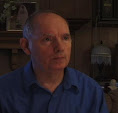Where does this idea come from, pterosaur bioluminescence? In the 1990's several Americans visited Umboi Island, Papua New Guinea, to invesigate reports of giant flying creatures by the name of "ropen." Other expeditions in Papua New Guinea followed in 2002, 2004 (two), 2006, 2007 (two), and 2009. Countless eyewitness have seen the flying light that has various names in these tropical islands:
- Ropen
- Indava
- Duwas
- Kor
- Seklo-bali
- Wawanar
These many names come from many languages in isolated villages in Papua New Guinea. One common factor is in the glow of the large nocturnal flying creatures. But these are not just rumors from "primitive" natives. David Woetzel, a business executive from New Hampshire, explored Umboi Island late in 2004, with fellow cryptozoologist Garth Guessman. Woetzel witnessed the ropen light as it flew briefly towards Lake Pung one night:
“My sighting was so quick that it was impossible to get a video—maybe 2 seconds . . . almost golden and shimmering around the edges. It looked like an old-fashioned street light in the fog. “There was no tail and it was flying horizontal from Mt. Barik toward Mt. Tolo.” . . . “I turned around and saw it streaking across the horizon and disappearing behind Mt. Tolo. The size, color and speed made it immediately stand out as unlike any other thing I've ever seen in the sky.But flying lights that might be modern pterosaurs---those are not restricted to remote tropical islands. Eyewitnesses in other parts of the world have also seen similar flying creatures. In fact, the Marfa Lights of Texas have been conjectured to be from bioluminescent pterosaurs that may be similar to the ropen of Papua New Guinea.

No comments:
Post a Comment
Thank you for your comment.